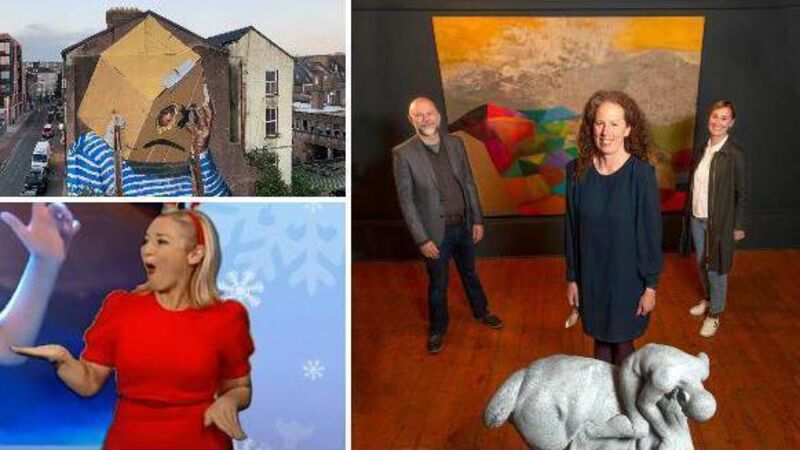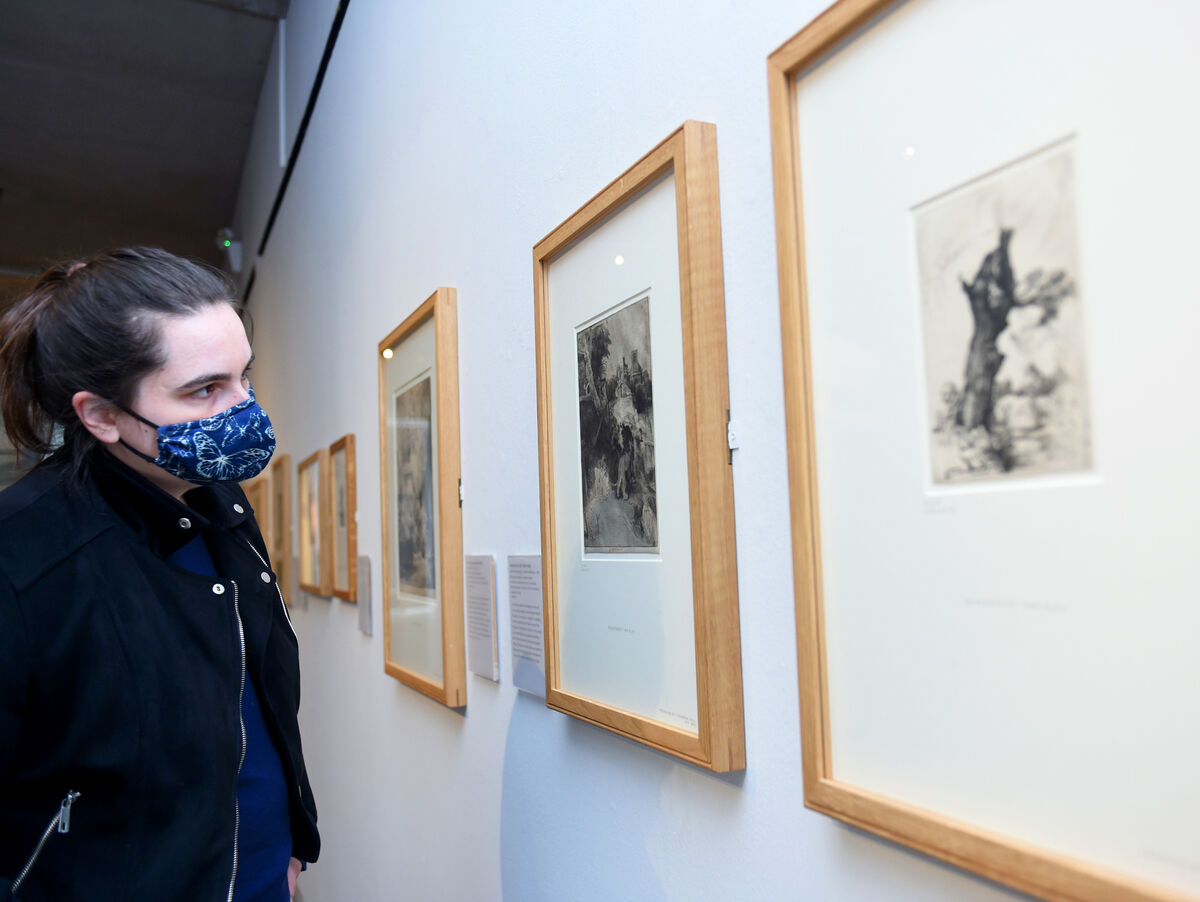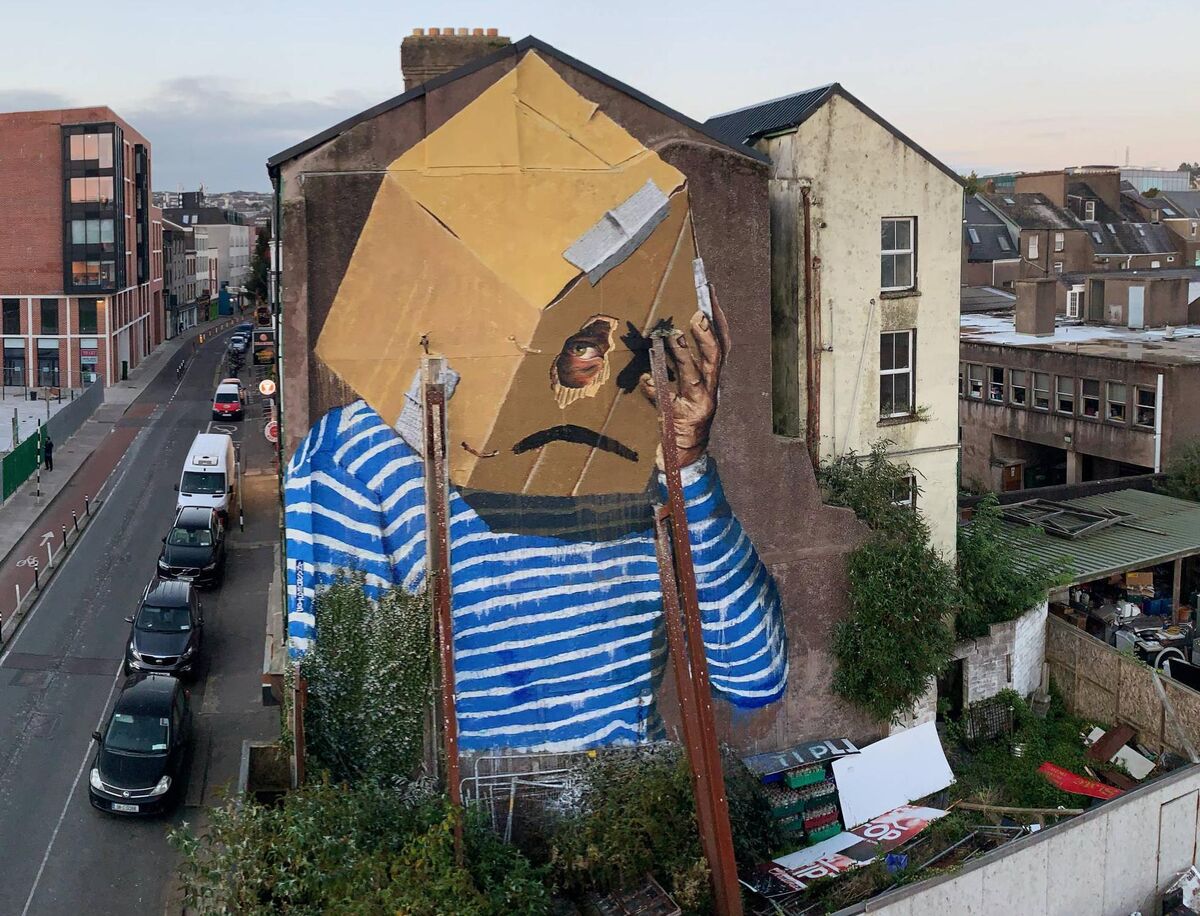Rembrandt, housing, NFTs: 10 talking points from the visual art world in 2021

Ardú's murals in Cork, acquisitions by the Crawford, and Amanda Coogan featured among the year's talking points. desart

The re-opening of the nation’s art galleries this summer was a welcome relief for those who had long since grown bored of watching Portrait Artist of the Year on television. One of the most popular exhibitions was Rembrandt in Print, which opened at the Crawford Art Gallery in Cork in September.
Rembrandt van Rijn, arguably the greatest artist of the 17th century, was a master portraitist himself, and is best known for epic paintings such as The Night Watch. He was also a brilliant printmaker, and 314 of his etchings survive. Fifty of the finest examples were loaned by the Ashmolean Museum at Oxford for the exhibition in Cork.
- Rembrandt in Print continues until 9 January 2022.
crawfordartgallery.ie/rembrandt-in-print
Despite his enormous success as an artist, Rembrandt had what might politely be called ‘money management issues,’ and suffered the ignominy of being buried in a pauper’s grave. Over the past few years, many Irish artists, their incomes decimated by the COVID-19 pandemic, worried they would finish up the same.
In response, the Government announced in October that it has earmarked €25 million for a pilot scheme for a new Basic Income Guarantee for artists and arts workers, which will launch in the spring of 2022. The scheme will most likely pay around 2,000 creatives a basic income of €325 a week for three years.
Welcome and all as this will be to those who can avail of it, there are other initiatives which should surely bear serious consideration. Before its demolition in 2018, the former FÁS building on Sullivan’s Quay in Cork was home to affordable studio and exhibition spaces for artists, and there are surely any number of vacant buildings in the city centre that could be converted to such purposes.
There could also be a serious re-appraisal of the Per Cent for Art Scheme, which should see a percentage of public funding for development projects being used to commission new arts projects. Sadly, the scheme is seldom availed of at present.
More welcome again, one suspects, would be a housing scheme that encouraged artists to continue living in urban centres. The borough of Barking and Dagenham has managed this in East London, with its A House for Artists initiative, designed to provide creatives with affordable rents.
createlondon.org/event/a-house-for-artists
In Cork, the scarcity of affordable living and studio spaces was highlighted by artist and musician Eileen Healy’s Lay a Brick project.
Healy hopes the sale of work from her studio will help her buy a house in the city, rather than continue depending on rented spaces.
Her paintings are currently available for purchase at the Quay Co-op on Sullivan’s Quay and On the Pig’s Back in Douglas, as well as through her Facebook and Instagram accounts.

The importance of artists to our urban centres was highlighted by the Ardú street art project in Cork. With much of the city’s arts activities facing cancellation or postponement, or moving online, Ardú – meaning Rise – kicked off in October 2020. It took the 100th anniversary of the Burning of Cork as its theme, commissioning seven artists to paint new murals about the city centre.
Works were completed by Deirdre Breen at Wandesford Quay, Maser at The Kino, James Earley at Henry Street, Peter Martin at Kyle Street, Shane O’Driscoll at Harley Street, Aches at Anglesea Street, and Gareth Joyce at Liberty Street. Four more murals were completed in 2021, by Conor Harrington at the Bishop Lucey Park, Friz on St Finbarr’s Road, Shane O’Malley on Lower Glanmire Road, and Asbestos at South Main Street.

If the art world was slow to acknowledge the value of street art, it was taken completely by surprise by the advent of the non-fungible token. NFTs are unique digital files traded in Ethereum cryptocurrency, using blockchain technology to provide proof of ownership.
Their existence became a cause celebre in March, when the American digital artist Mike Winkelmann, working as BEEPLE, sold an NFT called EVERYDAYS: THE FIRST 5000 DAYS for $69,346,250 million. The piece – a collage of digital images BEEPLE had created over 13½ years - was the first purely digital artwork ever auctioned at Christie’s.
NFTs may well prove to be a fad, but their current popularity among crypto currency investors – such as Vignesh Sundaresan, who bought BEEPLE’s EVERYDAYS - has seen them fetch the kind of prices most artists can only dream of. Irish digital artist Kevin Abosch was one of those who got in on the action, claiming to have sold €1 million worth of NFTS in 2021. Abosch has form: in 2015, he sold one of three copies of a photographic print of a potato to a French investor, also for €1 million.

Forty-four years after his death, aged 85, in 1957, Jack B Yeats’s reputation as one of Ireland’s best-loved – and most bankable - artists seems unassailable. The exhibition Painting & Memory, at the National Gallery of Ireland, was organised to coincide with the 150th anniversary of his birth, and includes work from over forty years of his career. It continues until 6 February 2022.
Yeats’ Shouting, a work in oils from 1950, came to auction at Whyte’s in Dublin on 29 November. It was expected to make at least €2 million, which would have made it the most expensive artwork ever sold in Ireland. As it was, it made €1.4 million, equalling the price previously paid for his paintings Reverie, in 2019, and The Whistle of a Jacket, in 2001.

Another initiative announced by the Government in October 2020 was an allocation to the Irish Museum of Modern Art in Dublin and Crawford Art Gallery in Cork of €1 million to collect work by Irish artists.
The galleries announced their purchases – of 400 works by 70 artists - in April this year. The Crawford’s purchases included work by local artists Tom Climent, Sara Baume and Fiona Kelly. IMMA’s included work by Alice Maher, Nigel Rolfe, and Amanda Coogan.
imma.ie/whats-on/collecting-the-new-recent-acquisitions-to-the-imma-collection
crawfordartgallery.ie/your-national-collection-2021

The aforementioned Amanda Coogan is one of Ireland’s best-known sign language interpreters, and was widely celebrated for her performance on the Late Late Show Toy Show in November, when she bopped along to a musical interlude by DJ Calum.
Coogan was elected to Aosdána the same month, in recognition of her status as one of Ireland’s leading performance artists. Aosdána is an honorary association of artists whose members are chosen by their peers. A cnuas – or stipend – is available to those who wish to work full-time at their art.
Coogan was admitted along with the sculptor Rachel Joynt and the painter Diana Copperwhite, testifying to the rude health of the visual arts in Ireland.
Coogan’s achievements include participating in the prestigious Venice Biennale in 2003, and the solo exhibition ‘I’ll sing you a song from around the town’ at the Royal Hibernian Academy in Dublin in 2015.
In Ireland, one of the most talked-about art projects of 2021 was Alice Maher and Rachel Fallon’s The Map.
Invited by Maeliosa Boyle, curator at Dublin art space Red Rua, to respond to the legacy of Mary Magdalene, Maher and Fallon spent more than two years sewing, knitting and crocheting a monumental textile artwork that employs the language of cartography to reimagine the Magdalene’s life and celebrate women’s invisible labour, in the home and without.
Maher and Fallon are multi-media artists, whose common interests include feminism and mythology. The exhibition is complemented by a sound installation by writer Sinéad Gleeson and musician Stephen Shannon. The Magdalene Series also features work by Jesse Jones, Grace Dyas and Amanda Coogan. The Map is on view until January 29, 2022.
ruared.ie/gallery/exhibition/the-map

Seán Scully is an artist with a keen sense of the monumental, whose huge abstract canvases are in collections the whole world over. His reputation as Ireland’s greatest living artist was cemented by a major retrospective, The Shape of Ideas, at the Modern Art Museum of Fort Worth in Texas, which concluded in October.
Scully, born in Dublin in 1945, was based in the New York for most of his adult life, though he has now settled in the South of France. He is best known for employing stripes and blocks of colour in his abstract paintings, but also works in pastels, watercolours, printmaking and sculpture. The Shape of Ideas featured 49 of his most significant paintings and 42 works on paper. The exhibition will tour to the Philadelphia Museum of Art in the spring.






